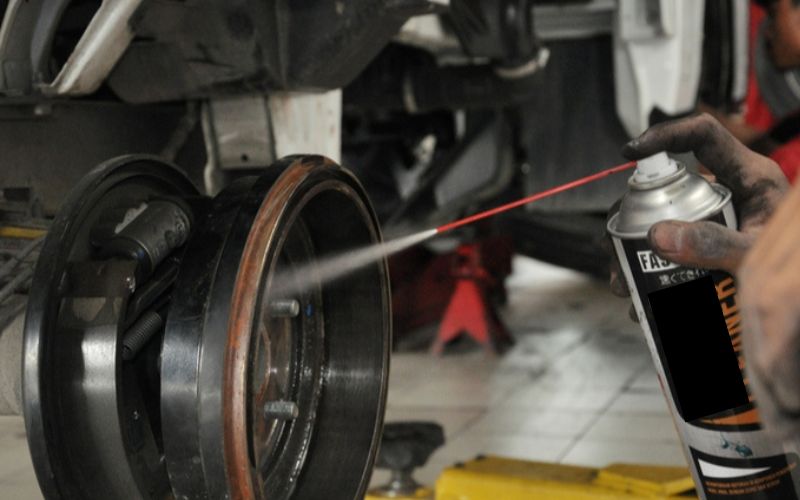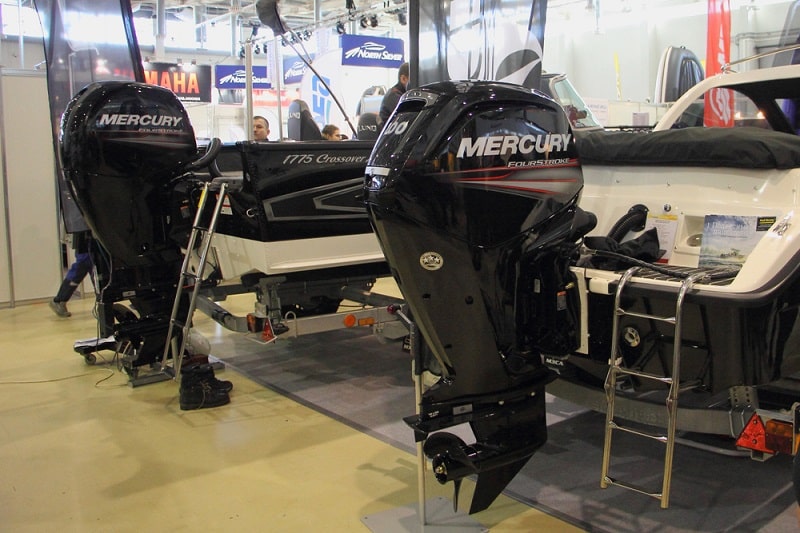If you’re new to the world of boating and outboard motors, you may or may not have heard about fogging your engine. You know it’s important to prepare the engine for storage, but what does fogging have to do with that?
What is engine fogging, and is it really necessary to fog your outboard motor?
Keep reading!
In this article, we’ll answer both of these questions and more.
Table of Contents
What is Engine Fogging?
Engine fogging is the term used when you spray a special type of oil into your motor to coat the internal components. This is done to protect these internal components from rust and corrosion.

Fogging is typically done as part of winterizing your outboard motor or preparing it for long-term storage.
If the motor is going to be sitting for a long time, the engine oil will tend to run down and settle in the lower parts of your motor, leaving the upper parts exposed and unprotected.
Fogging the engine ensures every component is well-coated in oil so that moisture in the air or left inside the engine won’t cause any corrosion.
Should I Fog My Outboard Motor?
In a general sense, it is a very good idea to fog your outboard motor when you get ready to store it for the winter or if you don’t use it very often. Fogging the engine will help to protect it and may even extend its lifespan.
That said, fogging isn’t necessary in every situation. If you use the motor all the time, live in a dry climate, or have a fuel-injected engine, then fogging your engine may not be as big of a priority.
There are two basic kinds of outboard motors: two-strokes and four-strokes. Let’s take a closer look at each kind and discuss whether or not fogging is necessary.
Two-Stroke Motors

Most two-stroke motors are on the older side and, as such, many of them are carbureted rather than fuel-injected.
Fogging these types of motors is an essential step of preparing them for winter or long-term storage. Luckily, fogging two-stroke motors is quick and easy, as we’ll see below.
Four-Stroke Motors

Most modern outboard motors are four-stroke, fuel-injected engines. These types of motors are designed to generously coat all of the internal components in crankcase oil, so fogging is more of an optional step unless you’re going to be storing it for an especially long period of time.
That said, it’s still a good idea to fog four-stroke motors from time to time, especially if you live in a more humid area. Fogging a four-stroke takes a little more effort than fogging a two-stroke, but it is still fairly easy to do.
How to Fog an Outboard Motor
The steps you take to fog your outboard motor will vary depending on whether you have a carbureted or fuel-injected engine. We’ll take a look at the step-by-step process for each type of outboard motor below.
But first, it’s worth noting that some outboards, such as the E-TEC motors produced by Evinrude, automatically fog the engine at the push of a button. You can check out an example of this in the following video:
If you have an outboard motor with an automatic fogging function, your owner’s manual will specify this and tell you how to do it.
Otherwise, follow the steps below:
Carbureted Engines
If you have a carbureted outboard motor, then fogging the engine will be a simple process with only a few steps.
If you would like to learn how to fully winterize your motor and prepare it for storage, check out this video:
If you’re only interested in the fogging part of this process, follow these steps:
Spray Fogging Oil Into the Carburetor
Make sure you use outboard motor muffs so you can run your engine out of the water. Once the muffs are connected and are flushing water through the motor, start up the engine.
- MOTOR ACCESSORY: Keep your boat’s engine in good condition by protecting it with the efficient and durable Shoreline Marine Dual Flow Flusher. This equipment is designed for most inboards and...
- PROTECTS ENGINE: This motor flusher helps extend your outboard engine’s life by regularly flushing away salt, silt, and grime after use. Not only clean, but you can also winterize your boat with the...
Last update on 2025-06-27 at 02:47 / Affiliate links / Images from Amazon Product Advertising API
Spray the fogging oil directly into the carburetor. Spray it in spurts of a few seconds each, allowing the engine to choke and sputter a bit. You will notice white smoke coming out of the exhaust valve. This is a normal part of the process.
It’s okay if the motor cuts out; that means that the oil is generously coating the inside of the engine. Turn off the motor as soon as this happens.
Spray Fogging Oil Into the Spark Plug Cylinders
Keep your engine turned off for this step. Take out all the spark plugs, then spray your fogging oil down into the cylinders in two- or three-second bursts.
Turn Over the Engine
If desired, place a towel over the motor to keep the oil from spraying all over everything, then start up your motor briefly, allowing it to turn over before cutting it off again.
Doing this will ensure the oil you just sprayed into your cylinders gets moved around and equally coats the inside of the engine.

Repeat by spraying more of the oil into the cylinders and turning over the engine again. You can repeat the process two or three times if you want to.
Replace the spark plugs when you’re done.
And that’s all there is to it! Your carbureted motor is properly fogged and ready for storage.
Fuel-Injected Engines
Fogging your fuel-injected engine is a little more involved and may take a little bit longer. What’s more, it won’t produce smoke because you won’t be doing it with the engine running.
Check out this video for a great visual on the process:
Then follow the steps below:
Spray Fogging Oil Into the Cylinders
Remove your spark plugs and spray oil into each cylinder. Apply it in bursts of three or four seconds at a time.
With fuel-injected engines, thoroughly coating the cylinders is the most important step. Be generous with the fogging oil.
Spray Fogging Oil Down the Air Intake and Exhaust Valves (Optional)
You may want to spray a bit of the oil into your air intake and exhaust valves; however, this isn’t necessary. It may offer a bit of extra protection in extremely humid environments or for exceptionally long-term storage.
Again, though, the important point is making sure the cylinders are coated.
Manually Turn Over the Engine
Use a ratchet or similar tool to turn over the engine manually a couple of times. This will circulate the oil through the engine, allowing it to coat all of the internal components.
Replace the spark plugs once you’re all finished, and your fuel-injected engine is ready to store.
Conclusion
Fogging your outboard motor is a good idea when you’re winterizing it or preparing it for long-term storage.
The exact process you use will vary slightly depending on whether you have a carbureted or fuel-injected engine. Regardless, the main point is to get the fogging oil down into the motor and allow it to coat all of the internal components.

I created this site to help people – to help you – with your boat problems. Instead of helping one person at a time, I want this website to be the “one-stop-shop” for everyone’s boating concerns. Read more.


